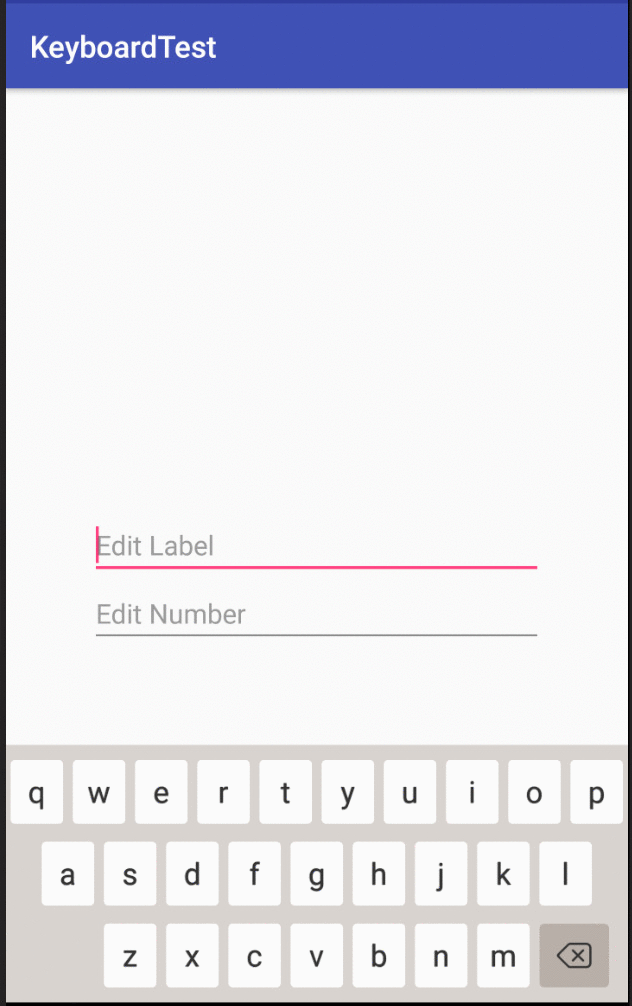Android自定义键盘的实现(数字键盘和字母键盘)
发布时间:2020-09-04 03:18:48
阅读:100
作者:浪淘沙xud
在项目中,产品对于输入方式会有特殊的要求,需要对输入方式增加特定的限制,这就需要采用自定义键盘。本文主要讲述数字键盘和字母键盘的自定义实现。
项目地址:https://github.com/xudjx/djkeyboard
键盘效果:

自定义键盘的实现步骤如下:
自定义CustomKeyboard, 继承自系统Keyboard,实现KeyboardView.OnKeyboardActionListener相关接口,以处理用户的点击回调;
自定义CustomKeyboardView, 继承自KeyboardView,实现自定义键盘绘制;
创建KeyboardManager, 用于处理自定义键盘的显示以及和输入UI的交互
自定义CustomKeyboard
Android系统Keyboard的构造方法如下:
/**
* Creates a keyboard from the given xml key layout file.
* @param context the application or service context
* @param xmlLayoutResId the resource file that contains the keyboard layout and keys.
*/
public Keyboard(Context context, int xmlLayoutResId) {
this(context, xmlLayoutResId, 0);
}
/**
* Creates a keyboard from the given xml key layout file. Weeds out rows
* that have a keyboard mode defined but don't match the specified mode.
* @param context the application or service context
* @param xmlLayoutResId the resource file that contains the keyboard layout and keys.
* @param modeId keyboard mode identifier
* @param width sets width of keyboard
* @param height sets height of keyboard
*/
public Keyboard(Context context, @XmlRes int xmlLayoutResId, int modeId, int width,
int height) {
...
}其中,参数xmlLayoutResId是必须的,另外还可以通过计算系统键盘的高度来设定自定义键盘的高度。
xmlLayoutRes的格式如下:
android:keyHeight="49dp"
android:horizontalGap="0.1333%p"
android:verticalGap="1px"
xmlns:android="http://schemas.android.com/apk/res/android">
android:keyLabel="1" />
android:isRepeatable="true"/>
...详细的数字键盘和字母键盘xmlLayoutRes资源文件可以从以下链接获取:
数字键盘xmlLayoutRes
字母键盘xmlLayoutRes
CustomKeyboard主要目的就是赋予xmlLayoutRes并实现特定按键的点击处理,其主要重载的方法是onKey(int primaryCode, int[] keyCodes)。详细代码如下:
public abstract class BaseKeyboard extends Keyboard implements KeyboardView.OnKeyboardActionListener{
@Override
public void onKey(int primaryCode, int[] keyCodes) {
if(null != mEditText && mEditText.hasFocus() && !handleSpecialKey(primaryCode)) {
Editable editable = mEditText.getText();
int start = mEditText.getSelectionStart();
int end = mEditText.getSelectionEnd();
if (end > start){
editable.delete(start,end);
}
if(primaryCode == KEYCODE_DELETE) {
if(!TextUtils.isEmpty(editable)) {
if(start > 0) {
editable.delete(start-1,start);
}
}
}else if(primaryCode == getKeyCode(R.integer.hide_keyboard)){
hideKeyboard();
}else {
editable.insert(start,Character.toString((char) primaryCode));
}
}
}
public abstract boolean handleSpecialKey(int primaryCode);
}如上所示是BaseKeyboard,数字键盘和字母键盘需要继承它,并实现public abstract boolean handleSpecialKey(int primaryCode)方法。
自定义CustomKeyboardView
KeyboardView 是承载不同的keyboard并绘制keyboard, 是键盘布局的绘制板, 并与系统交互。通过继承KeyboardView自定义CustomKeyboardView,可以对按键样式实现自定义。考察KeyboardView的源码,发现其UI样式都是private类型,这就需要通过反射的方式获取特定的UI属性,并重新进行赋值,同时重载onDraw()方法,在onDraw()中重新绘制。
详细代码可以参考github源码: BaseKeyBoardView源码
自定义键盘的UI效果如下:

数字键盘

字母键盘
创建KeyboardManager
主要处理以下功能逻辑:
绑定EditText和Keyboard,监听EditText的OnFocusChangeListener,处理键盘弹出和键盘掩藏;
处理系统键盘和自定义键盘之间的切换关系;
处理键盘区域其他自定义view的显示,比如需要让键盘自动搜索功能时,可在manager中进行相关处理
以绑定EditText为例:
public void bindToEditor(EditText editText, BaseKeyboard keyboard) {
hideSystemSoftKeyboard(editText);
editText.setTag(R.id.bind_keyboard_2_editor, keyboard);
if (keyboard.getKeyStyle() == null) {
keyboard.setKeyStyle(mDefaultKeyStyle);
}
editText.setOnFocusChangeListener(editorFocusChangeListener);
}
private final View.OnFocusChangeListener editorFocusChangeListener = new View.OnFocusChangeListener() {
@Override
public void onFocusChange(final View v, boolean hasFocus) {
if (v instanceof EditText) {
if (hasFocus) {
v.postDelayed(new Runnable() {
@Override
public void run() {
showSoftKeyboard((EditText) v);
}
},300);
} else {
hideSoftKeyboard();
}
}
}
};
public void showSoftKeyboard(EditText editText) {
mRootView.addOnLayoutChangeListener(mOnLayoutChangeListener);
BaseKeyboard keyboard = getBindKeyboard(editText);
if (keyboard == null) {
Log.e(TAG, "edit text not bind to keyboard");
return;
}
keyboard.setEditText(editText);
keyboard.setNextFocusView(mKeyboardWithSearchView.getEditText());
initKeyboard(keyboard);
...
}键盘的使用方式非常简单, 通过KeyboardManager实现调用
数字键盘:
KeyboardManager keyboardManagerNumber = new KeyboardManager(this);
keyboardManagerNumber.bindToEditor(editText2, new NumberKeyboard(context,NumberKeyboard.DEFAULT_NUMBER_XML_LAYOUT));字母键盘:
KeyboardManager keyboardManagerAbc = new KeyboardManager(this);
keyboardManagerAbc.bindToEditor(editText1, new ABCKeyboard(context, ABCKeyboard.DEFAULT_ABC_XML_LAYOUT));至此,自定义键盘的实现就介绍完了,文中介绍的更多还是实现的思路,具体实现可以参考github,有需要的用户也可以直接修改项目的源码。



















